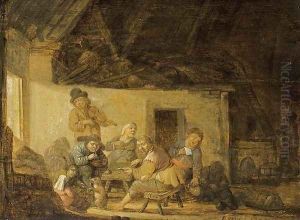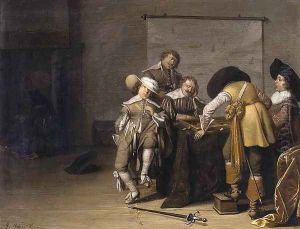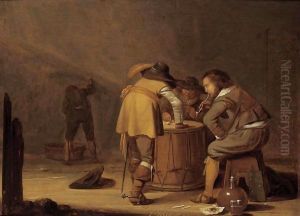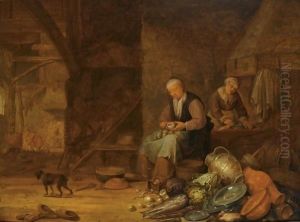Pieter Symonsz. Potter Paintings
Pieter Symonsz. Potter was a notable Dutch Golden Age painter, born in 1597 in Enkhuizen, a town in the Netherlands. His artistic journey is a reflection of the vibrant cultural and artistic environment of the 17th century in the Netherlands, a period that is often referred to as the Dutch Golden Age due to the remarkable achievements in art, science, trade, and military prowess. Potter's work is less widely known than that of his famous son, Paulus Potter, who is renowned for his detailed animal and landscape paintings. Nonetheless, Pieter's contributions to the Dutch art scene of his time were significant, and his works provide valuable insights into the artistic trends and societal interests of the 17th century in the Netherlands.
Pieter Potter's artistic style was deeply influenced by the prevalent trends of his time, characterized by a keen attention to detail, a profound appreciation for nature, and an interest in capturing the essence of daily life. Although there is limited information about his formal training, it is believed that he was part of the vibrant network of artists working in the Netherlands during the 17th century, which allowed him to develop and refine his skills. His works primarily include portraits, genre scenes, and religious subjects, showcasing his versatility and mastery in handling diverse themes and compositions.
Throughout his career, Pieter Symonsz. Potter exhibited a remarkable ability to capture the nuances of light and shadow, a skill that added depth and realism to his paintings. His portraits are particularly noted for their detailed depiction of the subjects' attire and expressions, offering a glimpse into the personalities and social standings of his sitters. His genre scenes and religious paintings, on the other hand, reflect his ability to narrate stories through art, engaging the viewer with the scene's emotional and moral undertones.
Pieter Symonsz. Potter's legacy, although overshadowed by the towering reputation of his son Paulus, remains an integral part of the Dutch Golden Age's artistic heritage. His works are preserved in several museums and collections, where they continue to be studied and admired for their historical value and artistic merit. Potter passed away in 1652, leaving behind a body of work that not only enriched the cultural tapestry of his time but also contributed to the enduring legacy of Dutch Golden Age art.



